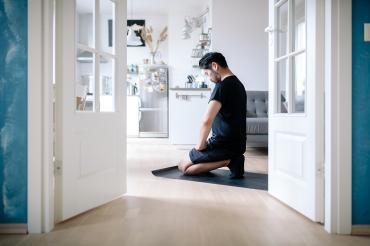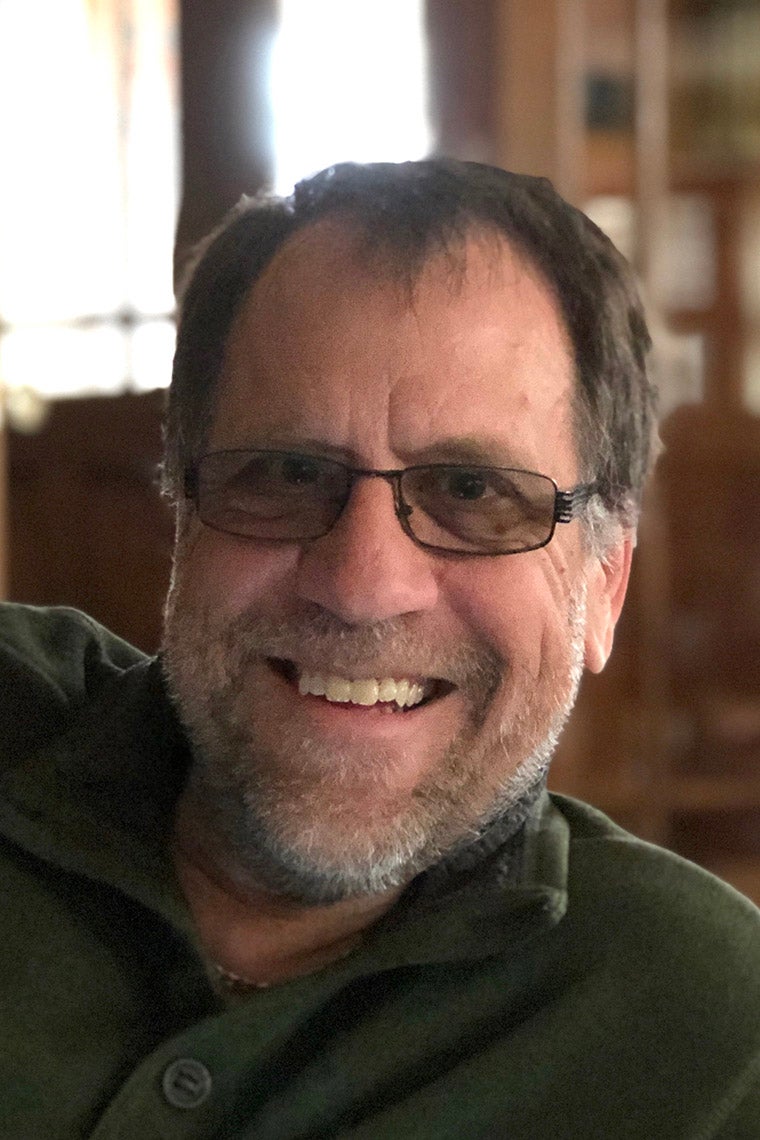U of T cognitive scientist livestreams daily meditation lessons during COVID-19

Published: April 30, 2020
How do our minds deal with the increasing complexity of the modern world? How can we train ourselves to face life’s challenges? How do we stay connected in a world full of distractions and alienation?
 Such questions are at the centre of the University of Toronto’s John Vervaeke’s academic work – not to mention his successful YouTube channel – and have never been more relevant than during COVID-19.
Such questions are at the centre of the University of Toronto’s John Vervaeke’s academic work – not to mention his successful YouTube channel – and have never been more relevant than during COVID-19.
An assistant professor, teaching stream, in the department of psychology in the Faculty of Arts & Science and the cognitive science program at University College, Vervaeke (left) recently launched a new series of videos in response to the pandemic. Every weekday morning, he livestreams a short lesson about meditation followed by a brief silent meditation period.
Arts & Science writer Jovana Jankovic recently spoke to Vervaeke about mindfulness and meditation, particularly during times of stress and anxiety.
What are the biggest misconceptions about meditation?
One is that meditation is about achieving a kind of relaxation akin to sleepiness – that it should make your body and mind cloudy and dull, and your consciousness fade away. That’s not the kind of relaxation you want in meditation. You want a type of relaxation that enhances your sense of stability and your sensitivity. Meditation is not a vacation, it’s an education.
The other misconception is that you’re not meditating unless your mind goes wide open and blank. That’s exactly the wrong attitude. Every time you catch yourself in distraction and come back to your meditative focus, you’re actually building the mindfulness muscle. It’s like doing reps in weight training.
Why did you decide to do this series of morning sessions during the pandemic?
I think our culture in general is going through a meaning crisis in which we lack a sense of how we are connected to ourselves, to each other, to the world; how much we matter, how much we’re in touch with reality, how much we’re overcoming self-deception, how much we’re affording wisdom.
If the meaning crisis is a fundamental sense of disconnection, the COVID crisis certainly exacerbates that. People feel very disconnected from their life, disconnected from the world, disconnected from each other. So, while it’s good to develop a mindfulness practice in general, I think it’s especially pertinent right now.
You say that frequency of meditation is more important than length of sessions. Could you tell us more about that?
Continuity of practice is more important than quantity, but that doesn’t mean the quantity is irrelevant. If you’re trying to learn something new and you just stay inside your comfort zone, you’re not challenging yourself, which is how learning happens.
So, when you’re sitting for meditation, if you only sit as long as it’s comfortable, you don’t get into what psychologists call the “zone of proximal development.” That’s where you learn new things. You have to keep sitting when it’s challenging and you have to use the principles and practices you’re taught to keep going.
But if you say, "Well, I can’t sit for a full 15 minutes, so I won’t sit at all," that will erode your practice. If you can honestly say to yourself that you can only sit for five minutes, then sit for five minutes. It’s not always sufficient, but it’s certainly better than nothing.
What are some quick and easy tips for beginners who are just trying meditation?
People try to get into a posture that is free from unpleasant sensations or discomfort. But you’ll never get there. I’ve been meditating for 20 years and I’ve never found such a thing. That’s really important to remember.
And centring your mind doesn’t mean just focusing your attention. It means stepping back and looking at your mind rather than looking through it. The metaphor I use is my glasses: I look through my glasses all day long, but if they are full of gunk, what I have to do is actually step back and look at them.
You need to try to do the same thing with your mind: Step back and look at its patterns and processes. And don’t frame meditation as instantly getting your mind to go blank. You have to learn to sit until your mind settles.
Finally, you need both a meditative practice and a contemplative practice. We use those terms as if they’re synonyms, but they’re not. To go back to my analogy, if meditation is like stepping back and looking at your glasses, how do you know if you’ve spotted a distortion or a defect in your glasses? You have to put them back on, right?
If you put them back on and you see better, that’s a contemplative aspect of the practice. Can you see through what was previously illusion into reality? This relates to work I did with my former student Leo Ferraro, who was a TA and an alumnus in the cognitive science program as well as my co-author for a book chapter called “Reformulating the Mindfulness Construct.”
Cognitive science is perhaps not as well-known as psychology or neuroscience. What is it?
In many ways, cognitive science is close to philosophy and particularly ancient philosophy like that of Socrates and Plato. It’s about studying the mind and its relationship to reality in a very comprehensive manner.
In the modern world, we have a discipline that studies the brain and that’s neuroscience. We have computer science, which studies artificial intelligence – that’s about systems that can solve problems and do information processing. Or we have psychologists, who study human behaviour. We might go to a linguist who studies how we communicate through grammar and syntax with each other. Or we might be concerned with culture, so we might go to an anthropologist for that.
Those things are not isolated. They interact with and affect each other. And cognitive science gets all of those other disciplines to insightfully talk to each other as they study the mind in their different ways. It’s sort of a very powerful bridging discourse between them.



